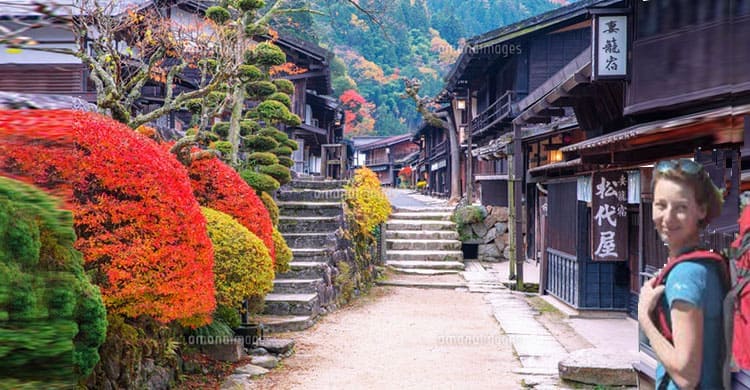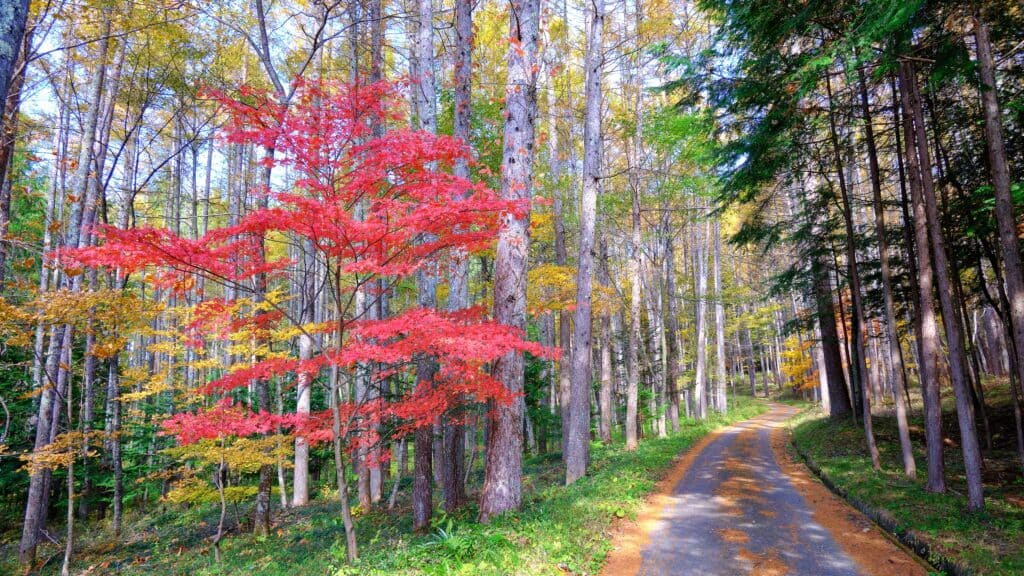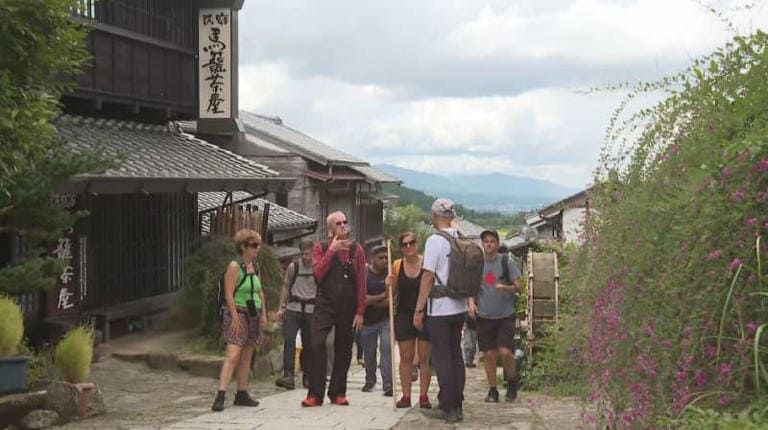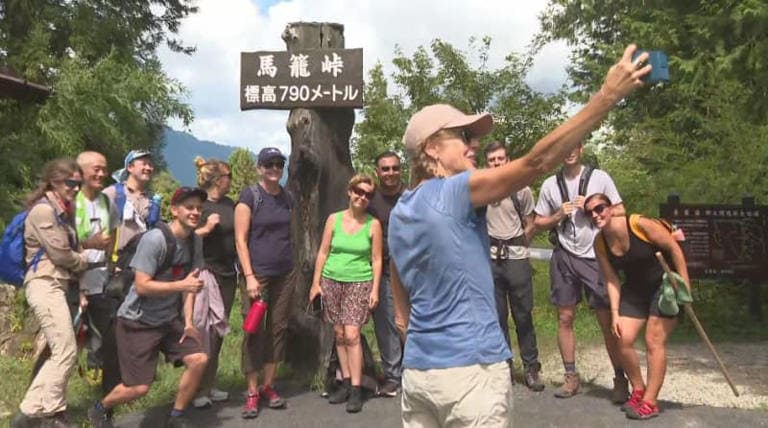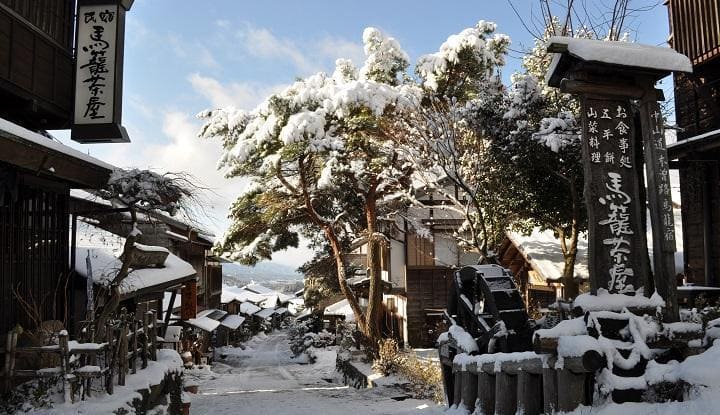Hi how are you? “Today’s topic is the highly popular hiking trail that allows you to experience the Edo period journey, crossing the Magome Pass.
Contents
What’s “Magome~Tsumago” hiking trail?
This year (2023), there have been 62 times more travelers compared to the same month last year.
It has also been featured in foreign guidebooks and travel websites, and in 2019, before the pandemic, nearly 38,000 foreign tourists walked the old Nakasendo highway.
Now let’s take a look at a video of what the tour looked like I’ve also hastily added that and the subsequent feelings of acceptance of a temple and a general family in Nagano City who had just hosted Israeli-Palestinian youth in the midst of the current conflict.
Tsumago or Tsumago-juku(post town), located in Nagiso, Nagano Prefecture, is a post town on the Nakasendo, one of the two old routes that connected Kyoto with Edo(now Tokyo).
At the request of the residents of Tsumago, it was declared that the town be preserved in its so original form and was designated as a “Preservation District for Important Traditional Structures” in 1976.
Just as in the Edo period, it is lined with traditional houses with their old lattice windows.
Located at the southwestern tip of Kiso Valley, Tsumago is a long and narrow gorge village that stretches from north to south for about 6 km.
There are several settlements scattered around the “Araragi River” and its tributaries, which flow northward through this gorge and flow into the Kiso River.
The Nakasendo that connects Edo and Kyoto is also called the Kisoji Highway. Tsumago-juku, which is the 42nd of the 69th Nakasendo from Edo, has been busy for a long time as a transportation hub where the Nakasendo and Ina Highway intersect.
Let’s walk there where we can enjoy seeing autumn foliage!
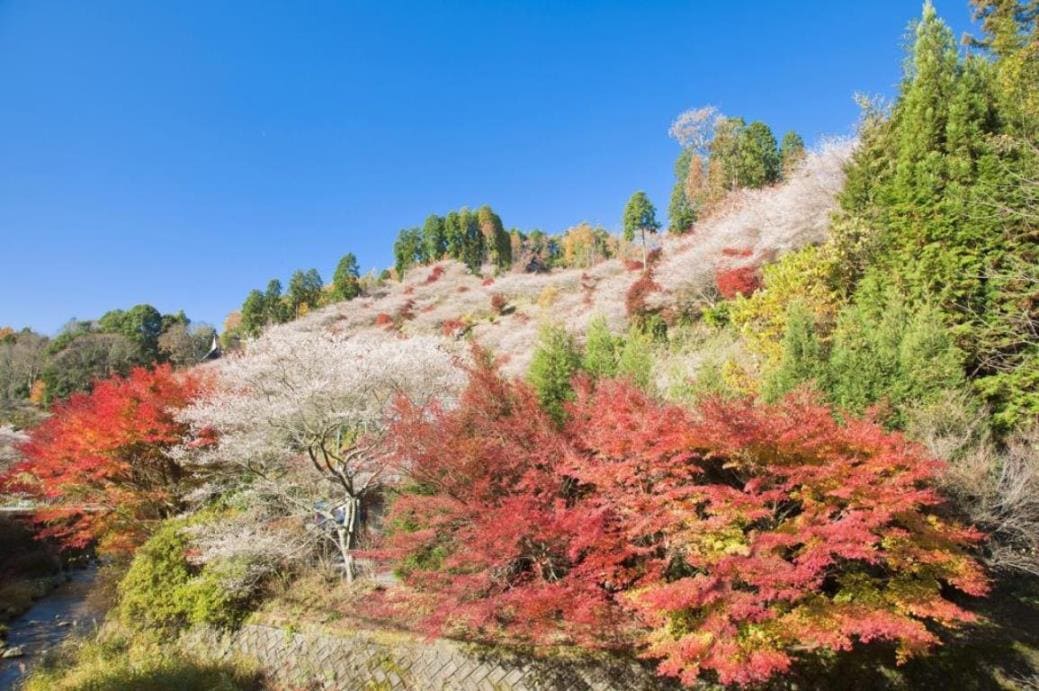 Enjoy the red colouring of leaves during this period (the middle October~the early November)!
Enjoy the red colouring of leaves during this period (the middle October~the early November)!
Let’s walk alongside photos of foreign hikers who have actually hiked the trail. On the first day, ten people walked the approximately 8-kilometer route from Magome-juku to Tsumago-juku, taking a little over four hours.
American Journalist: “Walking, stopping, having tea, and taking breaks feel like special moments.”
French Journalist: “I didn’t know much about the old highways, and I wanted to learn more about Japan’s ancient history in a more traditional way.”
How did your imaginary hiking journey go?
Takaaki Kaneko, Public Projects Division of Nagano Prefecture Tourism Organization: “Not just Magome and Tsumago, there are still undiscovered tourist destinations, so we want to promote them while respecting the culture and traditions that local people have cherished.
With the end of the pandemic, we expect many more travelers to visit again.”
Access to Magome
★from Tokyo to Nagoya by Shinkansen ab’t one hour 40 minutes Fare:¥11,090
from Nagoya to Nakatsugawa by express ab’t two hours 10 minutes ¥12,180
from Nakatsugawa to Magome by bus ab’t 30 minutes ¥710
 (above)Nakatsugawa station (below)Bus heading for Magome
(above)Nakatsugawa station (below)Bus heading for Magome
★from Osaka to Nagoya by Shinkansen ab’t 50 minutes Fare:¥6,560
from Nagoya to Nakatsugawa by express ab’t two hours 10 minutes ¥12,180
from Nakatsugawa to Magome by bus ab’t 30 minutes ¥710
 (above)Magome-juku(post town) (below)Magome for Tsumago
(above)Magome-juku(post town) (below)Magome for Tsumago
★from Nagano to Nakatsugawa by express ab’t 2 hours 10 minutes Fare:¥6,170
from Nakatsugawa to Magome by bus ab’t 30 minutes ¥710
Enjoy and have a pleasant time at Magome-Tsumago!

